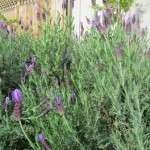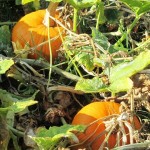Archive for October, 2017
Backyard Herbal–Hair Rinses and Hot Oil Treatments
In college, I often washed my then waist-long auburn hair with apple cider vinegar to keep the locks healthy and shining. And years ago, I discovered the decadent pleasure of a hot rosemary oil treatment and scalp massage that uses lavender oil.
If you grow your own herbs, making hair-care products couldn’t be easier.
The following are simple recipes you can make with home grown herbs and essential oils available in health food stores.
Apple Cider Vinegar Rinse Recipe: 4 cups of warm water to 1 cup apple cider vinegar. After you’ve washed the shampoo out of your hair, use the vinegar water as your final rinse.
Alternatively, you could add a couple of ounces of your favorite herbs like lavender, lemon balm, chamomile, or rosemary sprigs along with scented essential oils to impart shine and fragrance to your hair. Rosemary is also good for promoting hair and scalp health.
Rosemary Rinse Recipe: 4 cups of boiling water poured over 2 ounces of rosemary springs. Let set overnight under a lid or cover. The next day, strain out the rosemary sprigs and add to the liquid 10.5 ounces of apple cider vinegar and 10 drops of rosemary essential oil. Wash your hair, rinse, and as a final step pour through your hair the rosemary rinse.
For dry hair and scalp, create an oil treatment that you can do once every three weeks or a on a monthly basis. You’ll need rosemary, lavender, and a bit of tea tree oil (which possesses chemicals that may kill bacteria and fungus and reduce dandruff).
Hot Herbal Oil Treatment: 2 drops each of the following herbal oils–rosemary, tea tree, lavender–in 6 tablespoons of coconut oil. Thoroughly combine in a dark bottle, seal, and store. When you are ready for your hot oil treatment, sparingly apply the oil to strands of dry hair until all is lightly coated, not saturated. Cover with a hot towel for 15 to 20 minutes. Remove the towel and wash with shampoo as usual.
________________________________________________________
If you love all things natural, country, and homemade AND you enjoy a cozy mystery, check out my novels available online at Amazon.com, Barnes & Noble, Walmart, and other retail outlets as well as in bookstores everywhere.
For my newest novel, A HIVE OF HOMICIDES, click on the link: http://tinyurl.com/ya5vhhpm
Add a Secret Ingredient to Kick-start Your Compost Pile
The leaves of my plum and cherry trees are beginning to drop. The fig leaves have dried to a crisp and are also falling. I’ve got pumpkin and squash vines and stalks of corn pulled and lying in piles in the garden.
This dead, particulate organic matter (detritus) in my garden is too good to throw in the green recycle bin for the city to compost. By composting it myself, I’ll save the money I might spend on buying compost next year.
If your garden has a pile or two of of similar detritus but you’ve had trouble getting it to break down into compost, you might be missing a secret ingredient.
Add one to two cups of a nitrogen-rich garden product like blood meal, bone meal, or cottonseed meal–all are available from your local nursery or garden center.
Follow these simple steps.
1. Dump a wheelbarrow load of leaves where you will be composting this fall and winter. I use a rectangular raised bed.
2. From a cup of blood meal, generously sprinkle the meal onto the leaves.
3. Layer onto the pile grass clippings, pumpkin and squash vines, corn cobs, chicken house straw, dried oats, weeds, and other biomass material.
4. Add more blood meal, more leaves, and more organic material.
5. Sprinkle the remaining blood meal from your cup onto the compost pile and then wet it using a garden hose.
6. Cover with plastic sheeting.
The compost pile generates heat as the plant material breaks down. Thoroughly turn at two or three week intervals. Keep the pile moist (not drenched) and covered.
Using this method, you can expect to have lovely nutrient-rich compost to use on your spring flower and vegetable gardens.
___________________________________________________________________
If you enjoy reading about gardening topics and you are a mystery lover, check out my Henny Penny Farmette series of mysteries from Kensington Publishing. Each charming novel features a wholesome whodunnit along with delicious recipes and farming facts and tips.
Click here to see more: http://tinyurl.com/ya5vhhpm
Join me for “Coffee and Conversation” at Towne Center Books in Pleasanton, The date is Wednesday, October 18, 2017, at 11:00 a.m. The address is: 555 Main Street, Pleasanton, California. Phone is (925) 846-8826.
I’ll be sharing information about my farmette, my mystery-writing process, and my newest novel, A HIVE OF HOMICIDES.
 Facebook
Facebook Goodreads
Goodreads LinkedIn
LinkedIn Meera Lester
Meera Lester Twitter
Twitter










